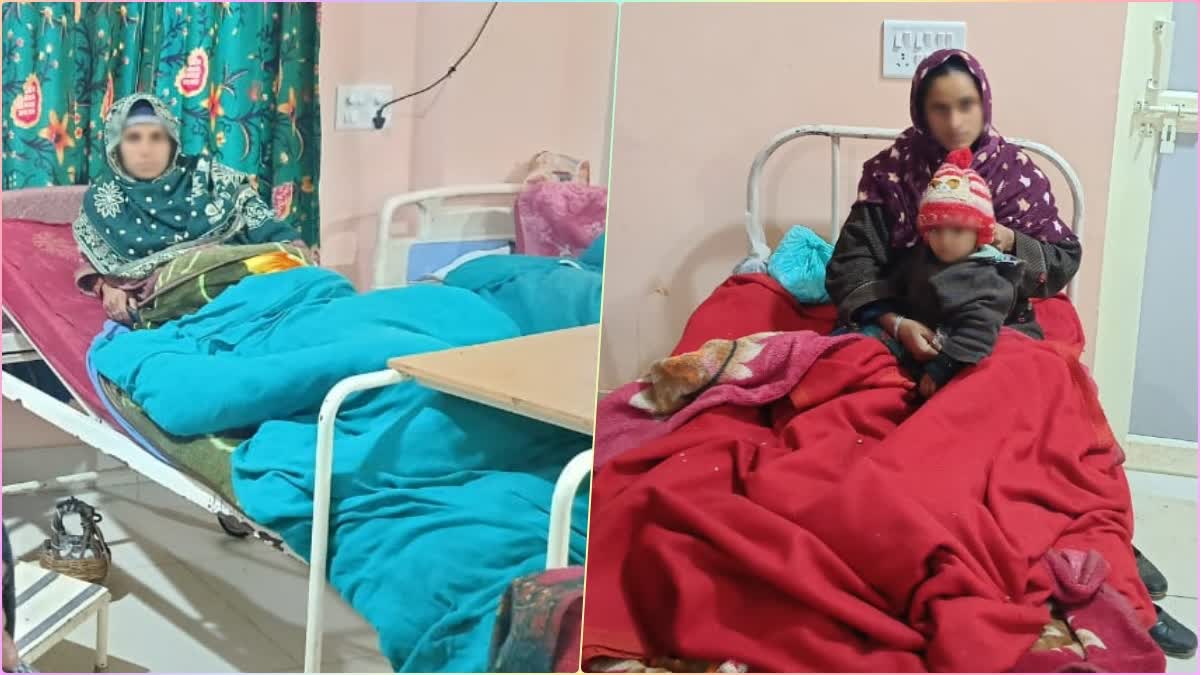Srinagar: As the winter ushers snow in Kashmir, it brings along a new task for doctors of shifting expecting mothers from remote and inaccessible places to hospitals to ensure their safe deliveries.
Scores of pregnant women from several mountainous areas are transported to hospitals and other locations ahead of the current snow to avoid inconvenience caused by the closure of roads. The initiative is a departure from the past when expecting mothers from snowbound areas had to be carried on shoulders in a charpoy by people to reach hospitals.
In south Kashmir’s Verinag Medical Block, which serves a population of one lakh spread over a vast network of remote mountainous villages, health caregivers like ASHA workers made rounds to the houses of these women to take them to hospitals. This followed the Kashmir health department’s announcements in villages through loudspeakers fitted on vehicles, urging families to bring expecting mothers to their concerned Public Health Centres (PHC), which are the first line of hospitals.
Dr Zulufkar Majeed, Community Health Officer (CHO) Verinag, said they were able to gather 14 expecting mothers in the PHCs to prevent medical emergencies in the face of current inclement weather starting from January 4.
These women, according to him, alongside their attendants, were brought to the health centres ahead of the meteorological centre Srinagar’s weather forecast for snow and are kept under observation until weather conditions improve.
“These women are shifted from their homes to hospitals and sent back in an ambulance. We keep them under observation, like regular monitoring by doctors or USG (ultrasonography) if required, is being carried out. But many deliver babies too during this period,” he told ETV Bharat.
The women in the last cycle of their pregnancy, or the high-risk patients, are the ones relocated from vulnerable areas to relatively safer zones ahead of winters, several doctors said. The health department across the valley readies the list of women registered with government facilities and accordingly sees the EDD (expected date of deliveries) to decide about relocation from hilly or snowbound areas.
But the task is far from easy. Families often resist moving women to hospitals despite the risks involved, as they have multiple apprehensions, including genuine ones, they added.
Dr Zulufkar explained that it takes a lot of counselling and involvement of the administration and local village heads to convince the families about the risks. For those who are reluctant, the ASHA workers are required to report emergencies to ensure timely intervention.
Besides ambulances, each remote hospital is equipped with 4X4 vehicles and bulldozers for snow clearance to ensure the vehicle reaches the nearest accessible spot where patients are shifted on shoulders or charpoys.
But Dr Zulufkar said that the good news is the majority of patients from these hard-to-reach areas do not require caesarean sections in his jurisdiction, which is otherwise highly prevalent in Jammu and Kashmir. He cites the examples of two women out of 14 who gave birth to two healthy babies through normal deliveries without complication and were managed at PHCs during the current snow spell.
With a network of 891 PHCs in ten districts of Jammu and Kashmir, only 190 are functioning round the clock. As per the government norms, a PHC covers a population of 30,000 in rural areas and 20,000 in hilly and tribal areas.
However, many within the health department point out a lack of infrastructure and a dearth of staff for their effectiveness in serving all. Hence, the expecting women with complications are often shifted to the concerned district hospitals, which are equipped with staff as well as infrastructure.
